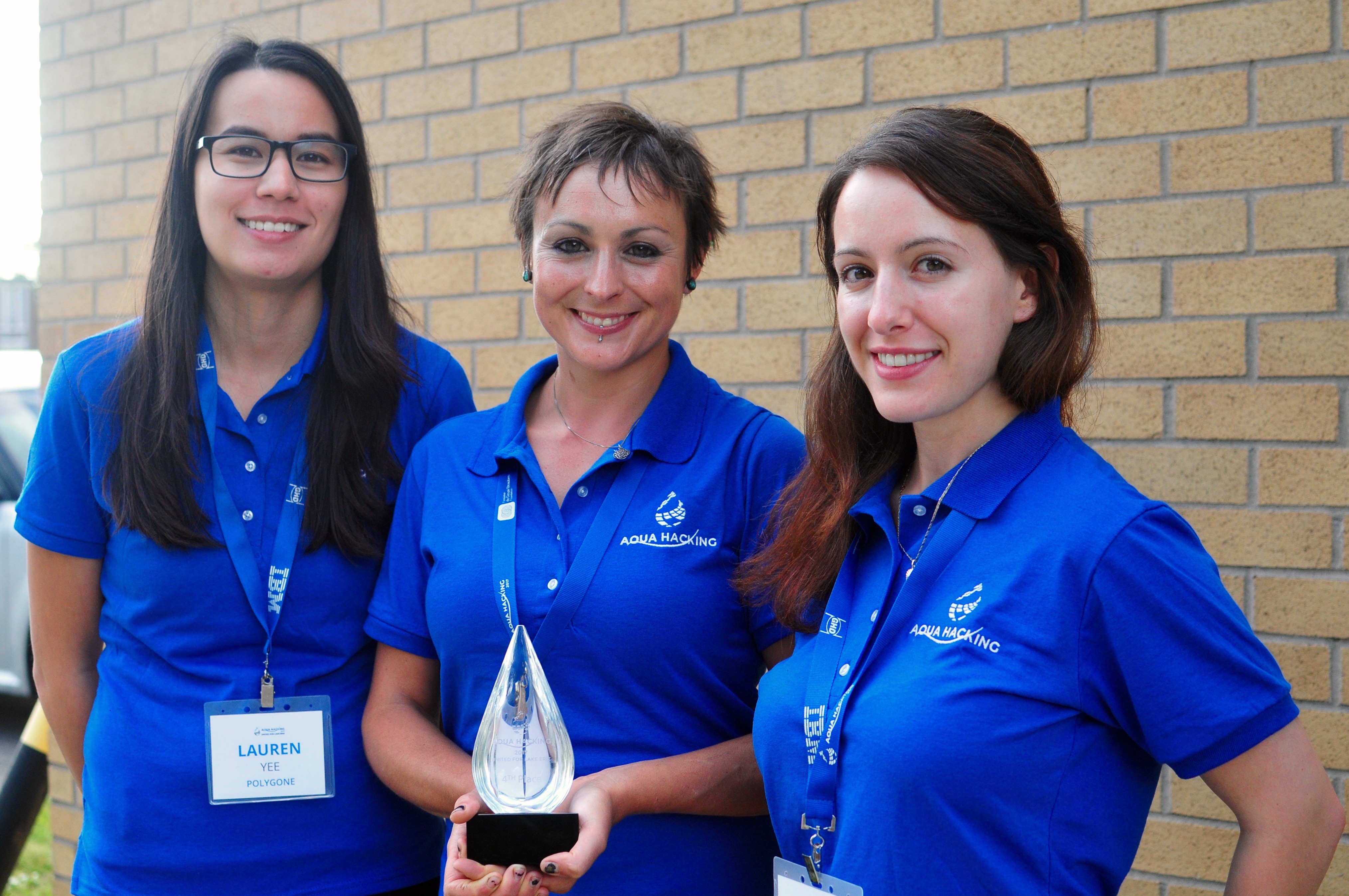We’re Eating Plastics From Our Own Dirty Laundry
Credit to Author: James Jackson| Date: Thu, 14 Sep 2017 17:12:27 +0000
Every time you wash your fleece jacket or other synthetic clothing, microscopic synthetic fibres are released and end up in our food supply and drinking water.
These microfibres are so small—visible only under a microscope—that they bypass municipal filtration systems and are consumed by fish and other marine life.
A team of women from Waterloo, Ontario is looking to solve that problem. They’ve designed something that looks a lot like a dryer sheet for your laundry machine. You’d be able to drop this reusable sheet, called PolyGone, into the laundry machine with your dirty clothes. It attracts and traps the microfibres so they can be recycled. They presented their work at the annual AquaHacking conference at the University of Waterloo on Wednesday.

“With these fibres entering our food system and ending up on our plates, we are essentially eating polluted laundry,” said co-founder Lauren Smith at the conference. The event saw five teams, including hers, compete for tens of thousands of dollars and entry into several local incubators and accelerator centres. Smith has a Masters degree in sustainability management from UW, specializing in water.
The issue of microplastics in the water supply is a growing concern. Last November, Canada took steps to ban microbeads from products such as toothpaste and shower gel by July 1, 2018. The move was hailed as a step in the right direction, yet microfibres in laundry remain a relatively obscure—but hugely important—issue.
“We decided on microplastics because we realized there was a lot of attention to microbeads in the lake, and regulations are upcoming,” Lauren Yee, another co-founder of PolyGone, told me in an interview after the presentation. (A working prototype of the sheet hasn’t yet been developed, and they’re still in the design and testing phase.) Synthetic fibres from clothing make up the bulk of all microplastic pollution in the Great Lakes, Yee said, meaning the microbead ban won’t solve the problem of plastic in our freshwater supply.
“It’s a hard problem to tackle because everyone is doing laundry,” she said.
Fish eat microplastics, which can smell like food to them, and then we eat those fish. Plastic is also coming straight out of our taps. A recent study of more than 150 tap water samples across five continents found 83 percent contained plastic pollution. The study also reports that microfibres have been shown to absorb toxic chemicals linked to cancer and other illnesses, and researchers found “no specific procedures yet exist for filtering or containing them.”
Read More: Our Clothes Are Poisoning Deep-Sea Animals With Microplastics
Another study, commissioned by outdoor apparel company Patagonia, found 1.7 grams of microfibres are released after washing just one synthetic jacket.
The AquaHacking competition closed out the fourth Water Research Conference at UW, and included speakers from around the globe discussing issues from water security and sanitation to algae blooms in the Great Lakes.
PolyGone finished fourth overall. First prize went to SIM Labs for their artificial intelligence program that will be capable of predicting algae blooms.
Judges were impressed with PolyGone’s idea. Depressingly enough, they questioned whether consumers would actually use the product, even if it’s in their own best interest. One pointed out it’s hard enough to get people to recycle their used batteries.
PolyGone’s founders said they’re in talks with washing machine manufacturers about creating a filter that would attach straight to the machine, which wouldn’t have this same problem.
“We really hope to have a prototype [of the reusable sheet] outside of the lab setting by the spring,” said Smith. “This funding will help us do that for sure.”
Get six of our favorite Motherboard stories every day by signing up for our newsletter.